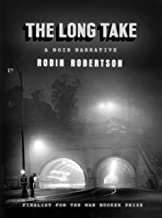H H Arnason’s History of Modern Art is certainly worth reading. Even if
you have no interest in art, you will at least benefit from the weightlifting.
This is not a tome: it's almost a library in paperback. And it needs to be
extensive, since the term “modern” can mean anything to anyone, even when the
significance of the perhaps more problematic term “art” is pre-agreed.
The book is true to its title in that it not only catalogues the movements, the individuals and the concepts that have created what we called modern art, it's also traces the origins of the concept of modernism, itself. Each “ism” of the artistic philosophy and history is listed, its essential characteristics are described and its principal protagonists introduced. There is usually one illustration per artist, always with an associated and insightful mini critique from the author. Occasionally, there are two or three illustrations per artist, and sometimes artists appear in more than one chapter, indicating they underwent stylistic transformations during the modern era. It should be noted that there are very few such artists, indicating how rare such stylistic flexibility has been manifest.
Most readers of this History of Modern Art by H H Arnason will surely want to use it like an encyclopedia that catalogues individual artists. And, of course, the work will function perfectly well as a reference book, since it is explicitly indexed and provides an extensive bibliography. But the quality of the author’s narrative style renders it both a coherent and rewarding read, cover to distant cover.
The material deals with painting, sculpture, architecture and photography. It focuses on the 20th century, which is surely more than enough for one volume. It does tend to concentrate on the United States, but Europe does figure large alongside it. There are examples from Africa, Asia, Latin America and Australasia as well. Since the book concentrates on styles and movements, there is just a chapter or two devoted continents other than Europe or North America. The coverage, however, is undeniably extensive.
What is the History of Modern Art demonstrates, however, is how this modern era has increasingly enshrined the status of the individual and his or her personal experience. Thus, as the 20th century progresses from broader movements such as Impressionism or Expressionism towards the perhaps the quintessential personal statement of Performance, we feel that the artistic expression becomes progressively a more private, internal reality publicly displayed. Art, arguably, has always been like this, but it seems that as the 20th century progressed, not only the content but also the language of the expression became ever more personalized and individual. Individual artists and even individual works thus confront the observer with the dual challenge of relating to an object via its own language. The viewer cannot assume anything, cannot expect to take familiar routes or arrive at envisaged destinations. And it is here the H H Arnason's work excels, because the author provides carefully constructed, succinct descriptions of style, motivation and form, alongside potted critiques of each illustrated work.
Perhaps the most interesting aspect of the book is how the author
juxtaposes is the apparently increasing tendency for art to present protest
within the context of having to market a product. The inter-relationships
between individual, community, capitalism, mass production, consumerism and
objectification recur throughout the text, and the comments are always
enlightening. So, anyone who is interested to say, “I don't know anything about
art, but I know what I like”, should read this History of Modern Art from
beginning to end and then the void of the first part of the quote might at
least be partially filled. And for those who already know something, the book
will pleasurably lead to more.










